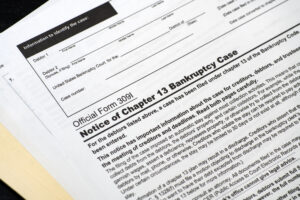Section 109(e) of the Bankruptcy Code provides:
(e) Only an individual with regular income that owes, on the date of the filing of the petition, noncontingent, liquidated, unsecured debts of less than $360,475 and noncontingent, liquidated, secured debts of less than $1,081,400, or an individual with regular income and such individual’s spouse, except a stockbroker or a commodity broker, that owe, on the date of the filing of the petition, noncontingent, liquidated, unsecured debts that aggregate less than $360,475 and noncontingent, liquidated, secured debts of less than $1,081,400 may be a debtor under chapter 13 of this title.
What this means is that in order to file Chapter 13 bankruptcy, a debtor:
- must have a regular income; this doesn’t necessarily have to come from employment and can come from other members of the debtor’s household
- noncontingent, liquidated, unsecured debts of less than $360,475
- noncontingent, liquidated, secured debts of less than $1,081,400
What is noncontingent, liquidated, debt? Good question. Basically it means that the debt has been reduced to a fixed number that can’t be disputed. Unfortunately, this isn’t a perfect definition, and if you have any questions about whether your debt amounts fall within those numbers, you should talk to a bankruptcy attorney.


